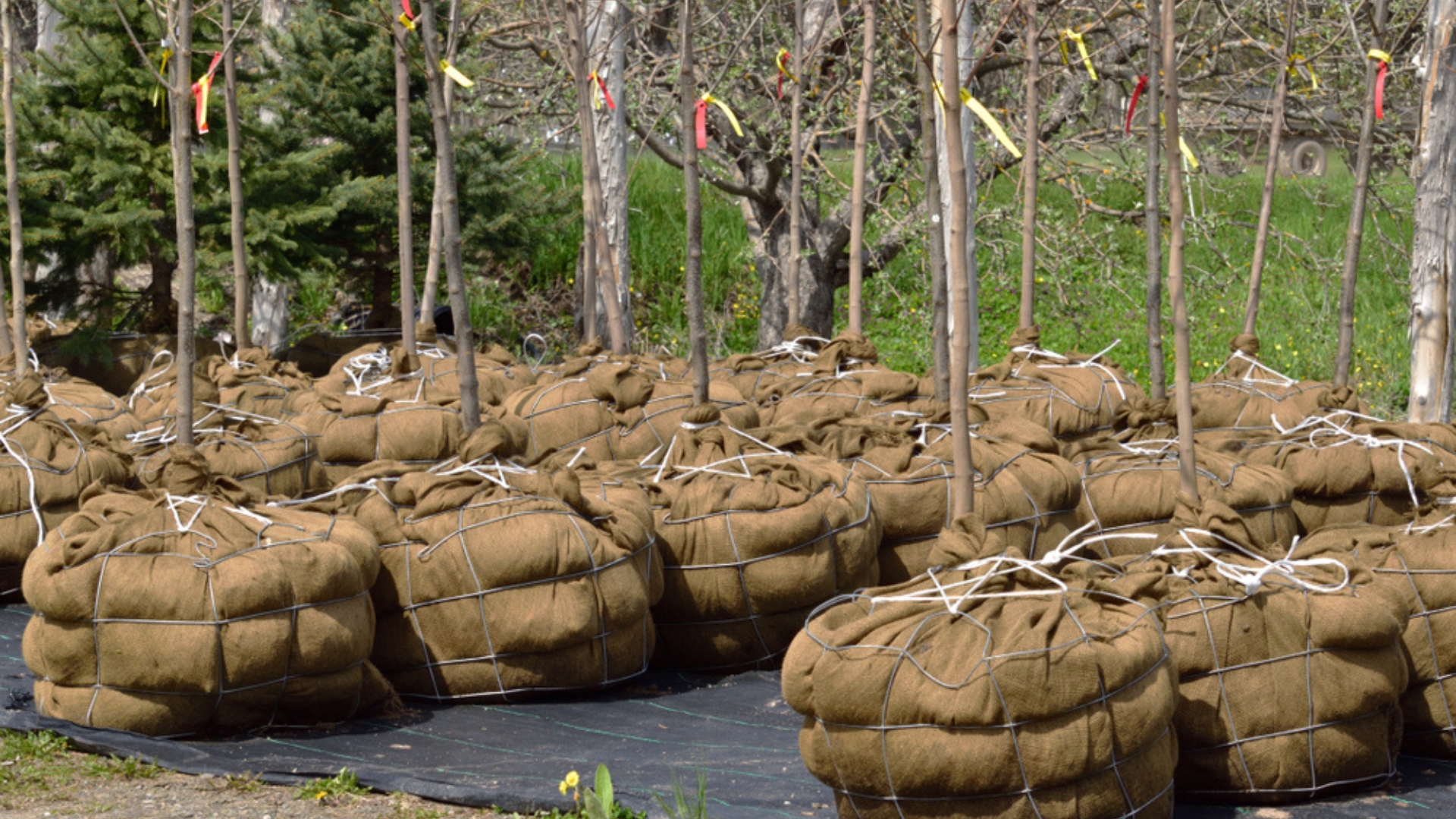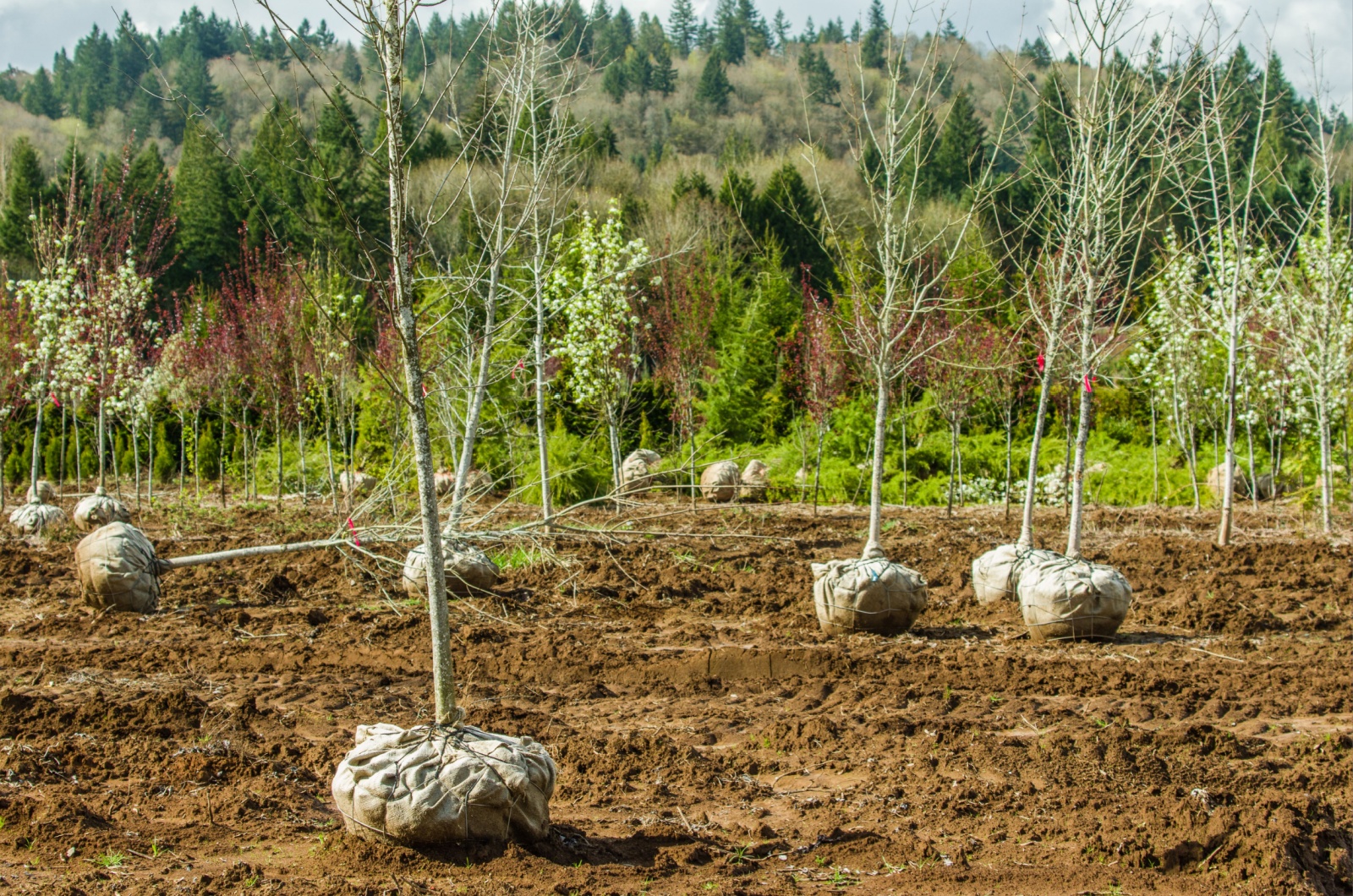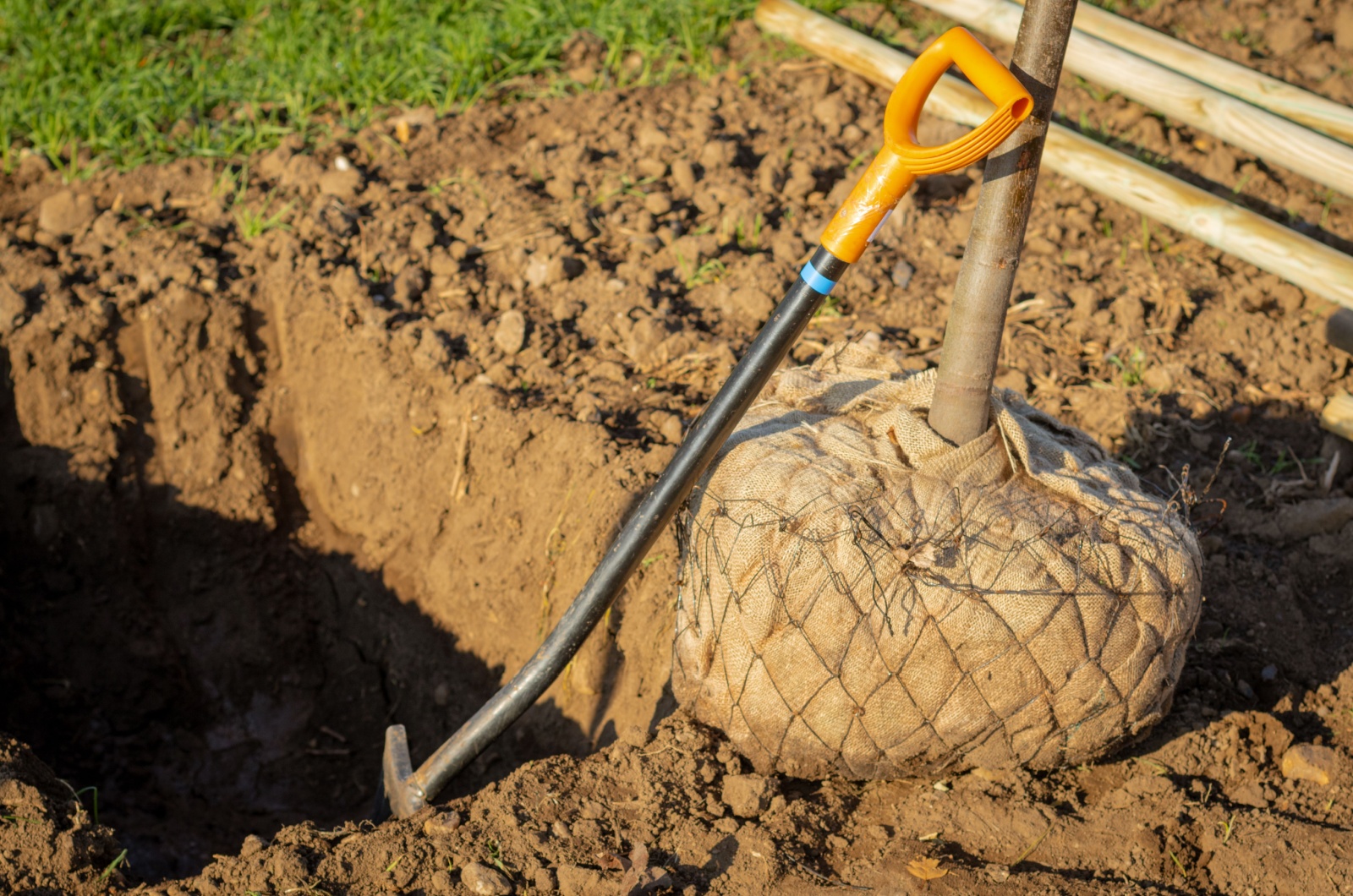Want to grow BB trees in your yard? If so, then you’ve come to the right place!
BB trees, otherwise known as ball and burlap trees, are all about proper planting – once you’ve done that right, the tree will grow happily and healthily. The trick is to get the timing right and to plant them properly.
Planting ball and burlap trees is a common practice in landscaping and gardening, and they are often chosen for their ability to establish well in new locations due to the intact root ball.
In this article, we are going to share some tips on when and how to plant BB trees.
Let’s get started!
When To Plant BB Trees
Spring and fall are the best seasons for planting B&B trees, especially if you live in Texas and other similar areas. In the fall, tree planting is safe until the ground freezes after the initial hard frost.
This way, the tree will have enough time to develop a robust root system before the challenging summer arrives. Remember, fall planting might be limited because specific tree types could be unavailable, or there might be a wait until the next spring.
Despite this limitation, fall planting is still good because it leads into the dormant winter period. And during dormancy, tree buds are less likely to be harmed by freezes.
Spring planting is also viable, with tree roots thriving when soil temperatures are at or above 50 degrees Fahrenheit. Spring provides consecutive days with suitable soil temperatures, optimizing root establishment.
The most favorable time to plant B&B trees revolves around the last spring freeze. This is to avoid potential growth impacts from late freezes.
Texas experiences typical early spring developments like leaf-out, bud break, and flowering, which can be susceptible to late spring freezes.
Also read: 2 Helpful Tips You Need To Ensure You’re Buying A Healthy Tree
Tips For Planting And Caring For BB Trees
When planting, dig a hole that’s twice as wide as the root ball and nearly as deep. However, in heavier soils like clay that retain water, subtract one inch from the depth because roots require oxygen, and dense soils with poor drainage keep water near the roots, reducing oxygen.
Gently place the plant in the planting hole, trying to keep the trunk straight as you add the soil around the rootball. Then, carefully cut the twine holding the burlap from the top of the root ball.
Remove both the twine and burlap from the outer edges of the root ball top, avoiding attempts to remove them from the sides or bottom. For the wire basket, gently bend it toward the bottom of the root ball if it extends over the top, hiding it below the soil surface.
Keep the top of the rootball about one inch higher than the surrounding soil, adding a few inches of mulch while avoiding contact with the trunk.
Water the plant well, adjusting the frequency based on soil type, plant needs, and seasonal variations. Extra watering, even with a sprinkler system, is often necessary during the summer.
Regularly inspect the plant for signs of stress, like yellowing leaves or wilting, and address any disease or insect issues promptly.
The most common cause of any sort of issue after planting is water imbalance, so understanding your soil, proper amendment, and careful watering adjustments are key.
Also read: The 7 Best Trees With Fall Color



